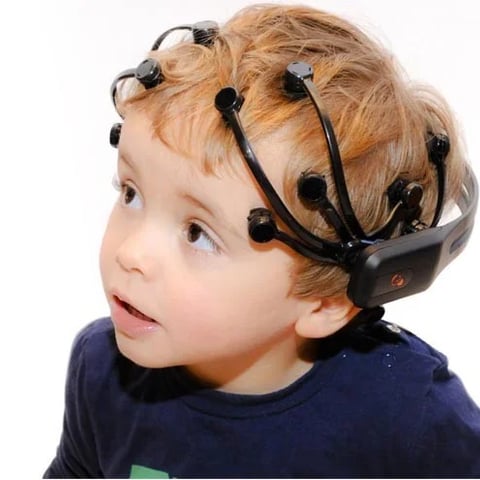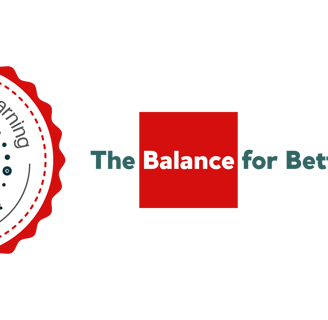
Unlock Your Brain's Potential: The Power of Neurofeedback and State-of-the-Art Neurotechnology
Delve into the fascinating world of neurofeedback, a powerful technique that empowers individuals to gain conscious and subconscious control over their brain activity. This article illuminates the core principles of neurofeedback and explores its application using a cutting-edge, user-friendly EEG headset. Discover how this state-of-the-art neurotechnology captures your brainwaves and provides real-time feedback, enabling you to learn self-regulation strategies that can lead to significant improvements in areas such as attention, focus, emotional regulation, sleep quality, and even cognitive performance. Learn about the potential benefits and the accessible nature of making neurofeedback training more attainable for those seeking to optimize their well-being.
THERAPY
Nelly Montoya
5/8/20243 min read
The human brain, a universe of interconnected neurons, constantly hums with electrical activity. These brainwaves, oscillating at various frequencies, reflect our mental states – from focused attention to relaxed drowsiness. Neurofeedback, a sophisticated form of biofeedback, offers a unique window into this internal landscape, empowering individuals to learn self-regulation of their brain activity for enhanced well-being.
At the forefront of accessible neurofeedback technology is NeuroNeural, a sleek, non-invasive EEG (electroencephalography) headset. This device captures the brain's electrical signals through sensors placed on the scalp, translating them into real-time data that can be visualized and analyzed. Unlike traditional clinical EEG systems, NeuroNeural offers a more portable and user-friendly approach, opening doors for neurofeedback training in diverse settings.
How does neurofeedback with NeuroNeural work?
The process typically involves these key steps:
Brainwave Monitoring: The NeuroNeural headset wirelessly transmits brainwave data (such as alpha, beta, theta, and delta waves) to a computer.
Real-time Feedback: Specialized software processes this data and provides the individual with real-time feedback, often in the form of visual displays (e.g., a video game, a changing graph) or auditory cues.
Learning Through Reinforcement: The core principle is operant conditioning. When the individual's brain activity shifts towards a desired pattern (for example, increased alpha waves for relaxation or enhanced beta waves for focus), the feedback becomes more rewarding (e.g., the game progresses smoothly, a pleasant sound plays). Conversely, deviations from the target pattern lead to less rewarding feedback.
Gradual Self-Regulation: Over multiple training sessions, the brain learns to associate specific mental strategies with the desired brainwave patterns. This allows for the development of greater conscious and subconscious control over brain activity, leading to lasting improvements in cognitive function, emotional regulation, and overall well-being for individuals.
Potential Benefits of Neurofeedback with NeuroNeural:
While individual results may vary, neurofeedback training using NeuroNeural has shown promise in addressing:
Attention and Focus: Enhancing concentration and reducing impulsivity in children and adults.
Anxiety and Stress: Promoting relaxation and emotional regulation for a calmer life.
Sleep Quality: Facilitating more restful sleep patterns, crucial for well-being.
Cognitive Performance: Potentially improving memory, processing speed, and executive functions seeking cognitive enhancement.
A Glimpse at NeuroNeural's Logo:
The logo incorporates visual elements that represent the core concepts of neuroscience, learning, and well-being. Given the "neuroneuronal" aspect, it's probable that the logo features stylized depictions of neurons or neural networks. These are abstract representations of interconnected cells, forming a circular or flowing design to symbolize integration and harmony. Colors play a significant role, with blues and greens often associated with calmness and learning, while brighter hues could represent energy and cognitive function. The overall aesthetic aim to convey a sense of scientific rigor combined with a feeling of growth and positive development, resonating with individuals interested in brain-based wellness.
Unpacking the Terms: Neuro vs. Neural
You're spot on! While often used interchangeably in casual conversation, "neuro" and "neural" carry distinct grammatical roles and slightly different connotations:
Neuro: As you correctly stated, "neuro" is a prefix derived from the Greek word "neuron," referring specifically to a nerve cell or nerve tissue. Therefore, "neuro" is typically used as a modifier to describe something related to the nervous system or neurons.
Examples: neuroscience (the study of the nervous system), neurology (the branch of medicine dealing with disorders of the nervous system), neurotransmitter (a chemical messenger that transmits signals between neurons), neurofeedback (feedback related to brain activity), potentially including systems like NeuroNeural.
Neural: "Neural," on the other hand, is an adjective that also pertains to nerves or the nervous system. It can stand alone to describe something characteristic of or involving nerves or neurons.
Examples: neural pathways (routes taken by nerve impulses), neural network (a system of interconnected nodes, often inspired by the structure of the brain), neural activity (the electrical and chemical processes occurring in the nervous system), neural plasticity (the brain's ability to change and adapt its structure and function).
In essence: Think of "neuro" as a building block used to create compound words specifically about the components and functions of the nervous system. "Neural" acts as a descriptive word that can stand alone or modify nouns related to nerves and the nervous system. While their meanings overlap, their grammatical function differentiates their usage in scientific and technical contexts, even when discussing innovative tools like NeuroNeural.
It's exciting to see the convergence of accessible technology like NeuroNeural and the growing understanding of neurofeedback's potential. As research continues to unfold, we can anticipate even more innovative applications of this fascinating field benefiting individuals.
Riding the Brainwaves to Well-being with NeuroNeural


info@wellnessinlearning.com
The name Wellness in Learning® and NeuroNeural®, the logos, and slogans constitute industrial property and are or may be in the process of being registered with the relevant authorities. Therefore, any unauthorized reproduction of these by any means is prohibited.
© Wellness in Learning 2025. All rights reserved.


